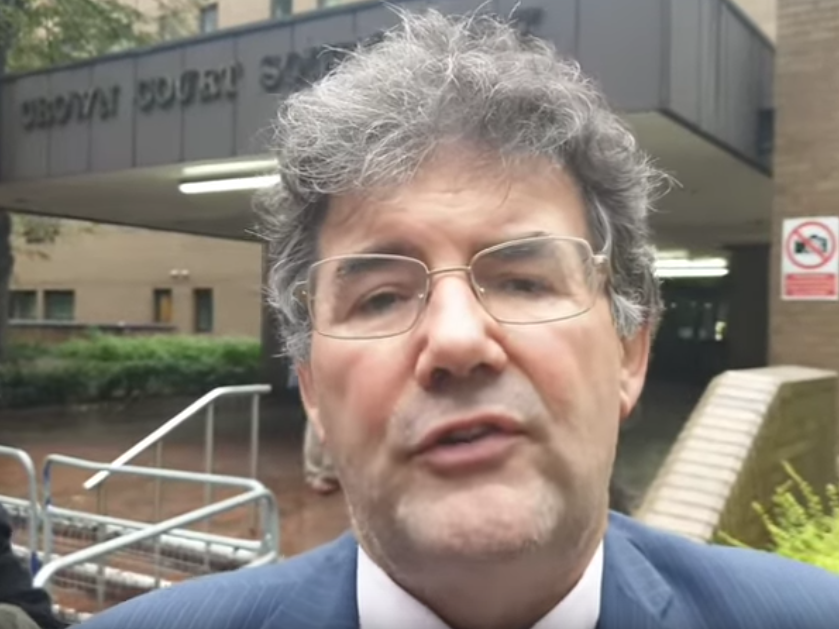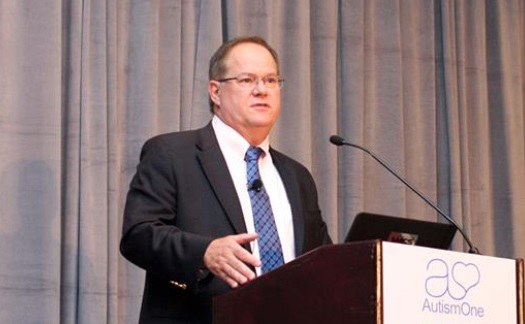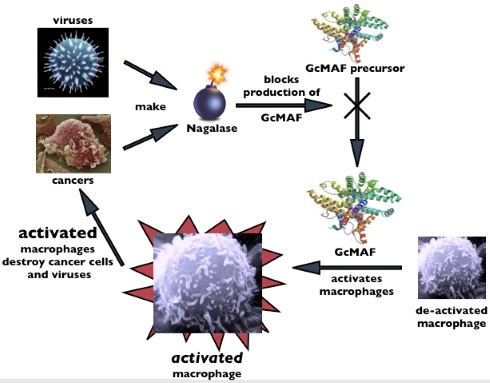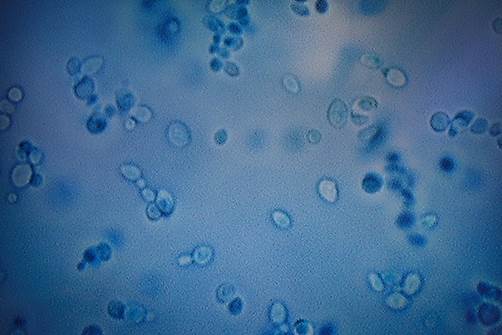The Healing Power of Cordyceps Sinensis Medicinal Mushroom
by Dr. Richard Alan Miller
© 2008–2009 Dr. Richard Alan Miller
A True Superfood
Since the dawn of shamanic healing over 50,000 years ago, mankind has searched for healing ingredients to concoct the ultimate panacea—a cure-all. One of the most sought-after ingredients was Cordyceps, a substance so revered that it was exclusively reserved for use by royalty in ancient China. Chemical analyses have shown that its allegedly remarkable properties are much more than superstition or mere folklore. Cordyceps sinensis is a new generation of mushroom being used by the pharmaceutical industry and also as a dietary supplement amongst more informed consumers seeking alternatives to the more conventional treatments for cancer and AIDS as well as a wide range of other health and immune system issues.
Cordyceps is considered a “food” by the US Food and Drug Administration (FDA) and is classified as “generally recognized as safe” (GRAS). A growing number of researchers now consider it to be a “superfood” that can be included in almost every diet. So why are these rediscovered mushrooms now regarded as superfoods?
These medicinal mushrooms are extremely high in both beta-glucans, which have been shown to be useful in cancer therapies, and polysaccharides. Polysaccharides are long sugar chains with many oxygen sections within them. As these sugars are broken down by the body, the oxygen molecules are released and absorbed on a cellular level. We know that all forms of cancer cannot exist in an oxygen-rich environment and that without proper oxygen levels the body is left to fall into degenerative states that encourage cancer, heart disease, immune disorders and diabetes, and also allow many viral diseases such as hepatitis C, Lyme’s disease and many others to flourish.
The key is how to deliver oxygen to the body on a cellular level. This host of pharmaceutical mushrooms includes such well-known products as Reishi, Maitake and Agaricus which are rich in beta-glucans, known sources for oxygen. This list continues to grow, with clinical studies now including more than 70 different mushroom species. The most interesting one to emerge is Cordyceps sinensis, which grows at about 16,000 feet (4,877 metres) in Tibet.
Cordyceps sinensis increases ATP (adenosine triphosphate) levels in the body by almost 28 per cent. ATP is the body’s energy supply source—the body’s battery, so to speak—and is required for all enzyme processes. It is also now believed that ATP is where cold-fusion (“Brown’s gas”) processes occur in the body on a molecular level. Although the concept of molecular-level cold fusion is not the subject of this article, I believe this is the root of biological energy exchanges, which will be explored in future writings. The impact on the energy state alone would make this mushroom a true superfood, but there is much more to be shared. What makes Cordyceps important for use with cancer is that it contains beta-glucans and polysaccharides. As the sugars break down, the numerous oxygen molecules are released on a cellular level, the result being that cancerous materials present are immediately destroyed. Cordycepin, one of the target compounds (nucleosides), inhibits the DNA repair mechanism and is probably responsible for its antiviral (HIV) effects.
Full-spectrum Chemistries
There is a lot of confusion today in the field of pharmaceutical mushrooms as to what form of mushroom product is the best for use. There are various components of the mushroom which have been used as separated compounds. Is it the fruit-body, the mycelium or an extract standardised from some particular compound which is responsible for the mushroom’s properties? This question is not as straightforward as it seems.
Fruit body. This is the mushroom that you see above the ground. It is the spore- producing portion involved with reproduction. Basically, the fruit body is equivalent to the flower of a plant. Fruit bodies only form in response to some stress from the environment.
Mycelium. This is the growth form of the organism under the ground where all of the life processes occur: growth, feeding, competing for survival and some forms of reproduction.
Broth. In cultivated mushroom products, the mycelium can be grown either by fermentation, in a tank full of liquid “broth”, or on a solid substrate of some material that is found in the natural growth condition. For the production of many mushroom-derived drugs and health supplements, the compounds are extracted not from the mycelium but from the broth in which the mycelium is grown.
As an example, there are a number of pharmaceutical drugs produced from the Shiitake mushroom: lentinan from the fruit body; LEM from the mycelium; and KS-2 from the residual culture broth, an extracellular compound. To extract lentinan from Shiitake mushrooms is a pretty straightforward chemical process. But what about another compound present in Shiitake, called eritadenine?
This compound is useful in the treatment of high cholesterol levels, while lentinan is used for the treatment of cancer.
If you extract Shiitake compounds using hot water and then use alcohol to precipitate out the polysaccharide fraction, the lentinan is concentrated and the resultant product is effective for cancer treatment or immune system stimulation. However, with this process you lose the eritadenine, and the extract has no effect on blood cholesterol. Consequently, even though a raw Shiitake product shows great effectiveness in treating high cholesterol, the “standardised extract” available today is useless for this purpose. So, what is the more valuable product: the raw, full-spectrum Shiitake or the standardised extract? The answer is neither, or both. It really depends on what you are hoping to achieve with the supplement.
For general health-supplement usage, the best product is the one that has the greatest effectiveness over a broad range of conditions. In this example, it makes much more sense to use a full spectrum of products—the fruit body, mycelium and broth.
German precision created the concept of standardised extracts. But now we are beginning to realise that mixed chemistries play a more important role in the effectiveness of how unrelated chemistries might produce specific results. It is a complex form that is still not completely understood but produces clinical results not available with standardised extracts.
Most pharmaceutical mushrooms are utilised as extracts for their most potent and most successful products and formulas. But these are very specific and targeted extracts, made for the particular purpose of concentrating specific compounds. Additionally, it is because these chemical compounds are produced as extracts that the pharmaceutical medicine industry is allowed to hold patent rights to them. Natural foods cannot be patented.
There are two general categories of bio-active compounds found in pharmaceutical mushrooms:
1. The polysaccharides, which comprise most of the medicinal compounds, are soluble in hot water and not in alcohol. The immuno-stimulant type of action so well known in mushrooms is from this class of compounds. If you are looking for immuno-modulation action, then don’t use alcohol extracts as they will not be effective.
2. The nucleosides, another class of compounds, are soluble in non-polar solvents like alcohol and hexane. These compounds are usually smaller in molecular size and are more specific in their bio-activity compared with polysaccharides. Nucleosides, deoxynucleosides and most of our antibiotics and antimicrobials fall into this category.
Health Benefits and Clinical Studies
The medicinal properties of Cordyceps are remarkable. In traditional Chinese medicine (TCM), the main use of Cordyceps has been in the treatment of asthma and other bronchial conditions. Modern research now confirms the efficacy of these ancient uses.
Much of what is known in the western world about Cordyceps sinensis is due to the work of Dr Georges Halpern, a physician and professor emeritus with the University of Hong Kong and the author of several books about Cordyceps.
One of the highlights of modern research has been the discovery of new antibiotics in this mushroom. One of these, cordycepin, is very effective against all sorts of bacteria that have developed, or are developing, resistance to other, more common antibiotics (such as penicillin, a fungus product!).
Cordyceps is especially effective against tuberculosis, leprosy and human leukaemia, as shown in many trials in China, Japan and elsewhere.
Some additional health benefits of Cordyceps are outlined below.
• Enhances physical stamina
The best-known medicinal action of Cordyceps is in the increase of physical stamina. In 1993, the Chinese National Games brought this mushroom to the attention of the world’s sporting authorities. A group of nine women athletes who had been taking Cordyceps shattered nine world records.
There have been many reports of amazing improvements in performance in various sports due to the intake of Cordyceps.
There has even been talk of banning Cordyceps from sporting events because it may give an unfair advantage to those who can get it!
Most professional athletes who use it now are unwilling to admit that they do, due to the possibility that some sporting authority will outlaw its use. In the other direction, the Canadian Olympic Committee has taken an official stand on Cordyceps, ruling that it is allowed in professional competition.
Clinical research has shown that Cordyceps use increased cellular bio-energy—ATP (adenosine triphosphate)—by as much as 55 per cent. Increased synthesis of ATP and faster energy recovery have been reported. It would seem that Cordyceps improves the internal balance mechanism, thus making the utilisation of oxygen more efficient. These properties may account for the overall physical enhancement, the extra endurance and the anti-fatigue effects that are seen in humans using Cordyceps.
• Improves respiratory function
Several scientific studies have demonstrated the benefits of Cordyceps sinensis in alleviating the symptoms of various respiratory illnesses including chronic bronchitis and asthma.
• Increases oxygen absorption
In a double-blind, placebocontrolled study with 30 elderly volunteers, Cordyceps was shown to improve significantly the maximum amount of oxygen these people were able to assimilate.
Chinese studies of cardiovascular illnesses have shown that ethanol extracts of Cordyceps mycelia and Cordyceps fermentation solutions caused a change in the biological action that allowed for an increase in cellular oxygen absorption by up to 40 per cent. In addition, studies have shown the effect of these compounds in relieving chronic obstructive pulmonary disease.
• Improves heart function
Numerous studies have demonstrated the benefits of Cordyceps sinensis in treating heart rhythm disturbances such as cardiac arrhythmia and chronic heart failure.
• Helps maintain healthy cholesterol levels
Four studies have demonstrated that Cordyceps sinensis helped to lower total cholesterol by 10–21 per cent and triglycerides (neutral fats) by 9–26 per cent, and at the same time helped to increase HDL (“good”) cholesterol by 27–30 per cent.

Chemical structure of adenosine and cordycepic acid
• Improves liver functions
Cordyceps sinensis has been shown to improve liver functions as well as help with cirrhosis, sub-chronic and chronic hepatitis and related liver diseases which are more prevalent than most people think.. The liver is the living filter of the body, cleaning the blood and all other fluids of impurities. There is no way for you to survive, much less feel healthy, without a functioning liver.
Clinical trials with Cordyceps supplement involving 33 patients with hepatitis B and eight patients with cirrhosis of the liver showed a 71.9 per cent improvement on the thymol turbidity test and a 78.6 per cent improvement on the SGPT test. These are enzyme tests showing changes in liver functions.
• Improves kidney disease
A Chinese study has shown a 51 per cent improvement in chronic kidney disease after only one month of dietary supplementation with Cordyceps.
• Reduces tumour size
Several clinical studies with cancer patients have been conducted in China and Japan, using a therapeutic dose of 6.0 grams of Cordyceps per day. In one study with 50 lung cancer patients who were administered Cordyceps in conjunction with chemotherapy, tumours reduced in size in 46 per cent of patients. A study involving cancer patients with various types of tumours found that Cordyceps sinensis extract (6.0 grams/day for over two months) improved subjective symptoms in the majority of patients. White blood cell counts were maintained and tumour size was significantly reduced in about half of the patients.
Researchers in Japan reported that Cordyceps enhances the general reactivity of the immune system in individuals with cancer. To discover this, they subcutaneously injected mice with cancerous (lymphoma) cells and then orally administered Cordyceps. This led to a reduction of tumour size and prolonged life. Cordyceps also improved the antibody responses in these studies.
• Enhances immunity and T-cell production
Cordyceps has been found to enhance “natural killer” (NK) cell activity, thus increasing T-cell production which results in expanded muscle mass. Muscle power is improved with the building of young, healthy cells. Cordyceps effectively recharges the protective army of NK cells. The body’s ability to fight infections and tumours depends on the availability of NK cells. These are essential as the first line of defence for maintenance of the body’s protection mechanism, commonly known as the immune system. Several scientific studies of Cordyceps have especially focused on NK cells and Cordyceps’ effect on them as they relate to cancer formation. One in vitro study demonstrated that Cordyceps significantly enhances NK cell activity in normal individuals as well as leukaemiastricken people.
In a Chinese study, published in the Chinese Journal of Integrated Traditional and Western Medicine, natural Cordyceps enhanced the NK cell activity of normal patients by 74 per cent and increased the NK activity of leukaemia patients by 400 per cent. Similar improvements of NK cell activities were found in large melanoma tumours.
• Assists symptoms of ageing
Clinical research in controlled studies has revealed that elderly patients suffering from fatigue and senilityrelated symptoms reported relief in these areas after using Cordyceps for 30 days. Their fatigue was reduced by 92 per cent, their feeling of cold by 89 per cent and their dizziness by 83 per cent. Patients with respiratory/breathing problems felt physically stronger and some individuals were able to jog up to 600 feet (183 metres).
• Protects against free radical damage
Several studies have shown that Cordyceps sinensis gave protection against the damage caused by free radicals and had powerful anti-oxidant properties.
• Helps discomfort from tired legs
Various studies have shown that Cordyceps sinensis improved the flow of blood in the body by relaxing the smooth muscles of the blood vessels and allowing them to expand, and also enhanced the functioning of the heart and lungs.
Cordyceps therefore prevents or reduces the contraction of blood vessels which interferes with blood flow in the legs—the main cause of tired legs.
• Improves sexual function
Three separate Chinese double-blind, placebocontrolled studies with over 200 men with “reduced libido and other sexual problems” showed remarkably similar results. On average, 64 per cent of the Cordyceps-users reported significant improvement at the conclusion of the experimental period compared with 24 per cent of the placebo group.
In another double-blind, placebo-controlled study conducted with 21 elderly women with similar complaints, 90 per cent reported improvements of their condition following the use of Cordyceps, compared with none in the control group.
Cordyceps has been shown to improve libido and quality of life in men and women, fight infertility and increase sperm count and survival. Clinical studies involving 189 male and female patients with decreased libido and desire showed improvement of symptoms in 66 per cent of cases. A double-blind study conducted by the Institute of Materia Medica in Beijing showed an 86 per cent improvement in female libido and desire. The most dramatic physical proof came from a fertility study involving 22 males which showed that, after eight weeks of taking a Cordyceps supplement, their sperm count increased by 33 per cent, their incidence of sperm malformations decreased by 29 per cent and their sperm survival rate increased by 79 per cent.
• Reverses HIV
In a study in 2004 in Ghana, 3,000 early-stage HIV patients were given a formula with Cordyceps sinensis as a primary ingredient. Beyond anyone’s wildest dreams, at the end of six months all 3,000 patients showed “no presence in their blood of HIV”. When an HIV–AIDS patient took the Immune-Assist drug for cancer, their clinical picture improved dramatically in regard to the HIV infection.
Immune Function, Anti-cancer Response and DNA Repair It has long been understood that the beta-glucan compounds found in many species of mushroom significantly enhance immune function. This class of compounds is the most widely prescribed class of anticancer medications in the world. The pharmaceutical drugs lentinan, PSK and grifolan are examples of these compounds.
There is evidence of another mechanism at play in the Cordyceps anti-tumour response besides the wellknown immune modulation triggered by the polysaccharide compounds. It is related to the structure of at least some of the altered nucleosides found in Cordyceps, exemplified by the cordycepin compound (3′-deoxyadenosine).
This is a molecule almost identical to normal adenosine, with the exception that it is lacking an oxygen atom on the ribose portion of the molecule at the 3′ position.
The same lack of this 3′ oxygen can be seen in other Cordyceps compounds such as dideoxyadenosine. The lack of oxygen at this particular position is thought to be important in a very specific way. The structure of DNA depends on this oxygen to create the bond between adjacent nucleosides. This bond is between the 3′ and the 5′ positions on the ribose portions of the nucleosides, effectively forming the “ladder structure” that holds the DNA together.
In the replication of any cell, the first step is the separation of the DNA molecule down the middle, like unzipping, between the pairs of complementary nucleosides.
The next step is the insertion, one at a time, of newcomplement nucleosides. These form hydrogen bonds between the complement pairs and phosphate–sugar bonds between the 3′ and 5′ positions at the outside edge of the molecule, which is the ribose portion.
The synthesis of the new DNA molecules proceeds with the sequential insertion of newcomplement nucleosides one at a time into the newly forming DNA molecule until the original strand of DNA is replicated twice, each of these strands being an exact copy of the original and forming the genetic code for a new generation of cells. This synthesis continues to proceed with the insertion of each new nucleoside, unless a 3′- deoxyadenosine (cordycepin) molecule is pulled in.
When this happens, there is no oxygen present at that vital position to form the 3’–5′ bond, and the replication of the new DNA molecule stops. Once the DNA synthesis stops, the cell cannot continue to divide and no new cell is formed. (In normal mammalian cells, this insertion of the de-oxygenated adenosine is of little importance, as healthy cells have an inherent DNA repair mechanism.)
When this sort of error occurs, the altered nucleoside (the cordycepin) is removed from the string of nucleosides and a new segment of adenosine is inserted. However, by their very nature, cancer cells have lost this DNA repair mechanism. (If they could correct their DNA errors, they would not be cancer cells.)
Most bacteria and all viruses (including the human immunodeficiency virus, HIV) lack this DNA repair mechanism.
When we look at the rate at which cancer cells replicate, it is clear how this mechanism could exert a significant anti-tumour response. For example, a normal healthy breast tissue cell has an average life span of about 10 days, after which it reproduces and a new cell is formed. But breast cancer cells multiply much more quickly than healthy cells, reproducing on average every 20 minutes. This means that breast cancer cells replicate about 750 times more quickly than the surrounding healthy tissue. If the cordycepin were equally toxic to both types of cells, it would be killing off the cancer cells 750 times faster than the healthy cells. But because of that DNA repair mechanism in the healthy cells, cordycepin appears not to interfere with the healthy cell replication, and the tumour-cell kill rate is actually much higher than the 750:1 ratio.
The same sort of DNA interruption mechanism is also responsible for the anti-tumour effects of some other chemotherapy agents. This same mechanism of DNA synthesis inhibition is probably the mechanism responsible for the antiviral effects seen with cordycepin.
Conclusion
The best-known medicinal action of Cordyceps sinensis is the increase of physical stamina. Cordycepin is very effective against all sorts of bacteria that have developed resistance to other antibiotics. Cordyceps has been shown to improve the internal balance mechanism, thus making the utilisation of oxygen more efficient.
Numerous studies have demonstrated the benefits of Cordyceps sinensis on heart rhythm disturbances such as cardiac arrhythmias and chronic heart failure.
Four excellent studies have demonstrated the benefits of Cordyceps sinensis in helping to lower total cholesterol and triglycerides and to increase HDL (“good”) cholesterol.
Clinical studies involving male and female patients with decreased libido have shown significant improvements in symptoms. The most dramatic physical proof has come from a male fertility study that showed that a Cordyceps supplement greatly increased sperm count, decreased sperm malformations and improved sperm survival rate after eight weeks of use. These properties and others may account for the overall physical enhancement, the added endurance, the libido-enhancing attributes and the anti-fatigue effects seen in humans using Cordyceps sinensis. Worldwide studies have shown that this unassuming fungus delivers even more potentially life-enhancing benefits than claimed. This is a superfood which is just beginning to make itself known in the western medical literature.
The reduction of this active fungal material to nanoparticle size also has great promise, and further research work is being conducted which may lead to additional patented medicines.
More importantly, the full-spectrum of compounds present in the fruit body, mycelium and broth of the natural substance continues to prove once again that ancient knowledge meets the modern test of science.
© 2008–2009 Dr. Richard Alan Miller
This article is an extract from the first chapter of Dr. Miller’s book Power Tools for the 21st Century, published with permission from Dr. Richard Alan Miller.

Power Tools for the 21st Century
is available for purchase at Dr. Richard Alan Miller’s website.

Now also available for download:
Healing Yourself is a book from the archives of Dr. Miller, preserved in eBook form, in its original 1974 presentation, complete with endearing illustrations and margin notes. This “Manual of Herban Guerrilla Warfare”, was originally created for the ‘country doctor community clinic’ and is full of helpful tips and remedies for a range of common ailments and conditions. The original information for this compilation was provided by Dr. Miller and is still useful and applicable these days. You’ll find suggestions for all sorts of issues, including ones for the stomach, teeth, skin, women’s health, hair, bowels, colds, babies’ complaints, aches and pains and more – with a comprehensive index at the back.
image credit realmushrooms.com








 Doug’s Cancer Hypothesis
Doug’s Cancer Hypothesis